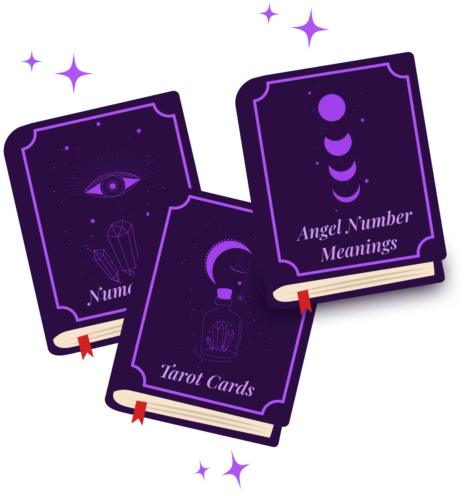Daily meditation can seem daunting for many. The idea of clearing your mind and separating yourself from distractions and stresses can be difficult. But only once meditation is part of your daily routine, will the benefits be clear. Daily meditation can take many forms; from sitting with your legs crossed alone with your thoughts, walking meditation or guided meditation with an app or video. DOSE writer Demi has everything you need to know to make daily meditation part of your routine.
What is meditation?
Meditation is a set of techniques that are intended to encourage a heightened state of awareness and focused attention. Headspace describe meditation as the one skill where you don’t have to strive to achieve something, it’s just a place of stillness where no effort is required.

What are the benefits of meditation?
‘When you’re dealing with heightened levels of stress and anxiety, meditation can help you tap into the calm and peace that lives within, find a state of clarity and return to the present moment,’ says Maddy Gerrard, head of partnerships at Insight Timer. ‘It helps us to understand the mind, detach from thoughts and become more aware of our own feelings and reactions.’ Other benefits include:
How meditation can reduce stress and anxiety
Meditation is a great practice for anyone suffering from anxiety or stress. One study found that following a meditation programme significantly reduced signs of stress in participants.
How meditation can improve sleep
Relaxing your mind throughout the day can have huge benefits on your sleep. This study found that adults who regularly practiced meditation found improvements to their sleeping problems. It’s recommenced to meditate before bed for anyone who suffers with sleeping issues.
How meditation can increase focus and attention
Many peoples attention spans are rapidly decreasing. Meditation is basically forcing yourself to focus for a given amount of time. So its no surprise that this study found that after following an 8 week meditation programme, participants attention and focus significantly improved.
Daily meditation basics for beginners
Finding the right place and time
Creating a habit is easier if we do it the same time every day. So, to make daily meditation part of your routine, decide if it fits best with your routine in the morning, evening or maybe in the middle of your day. The best place to meditate is somewhere you feel comfortable, safe and have no distractions. It may be best to do it when your flat mates or family are out or sleeping so your mind wont be worried about potential distractions or interruptions.
Deciding how long you want to meditate for
For beginners, it’s best to start meditating in short amounts of time; 3, 5 or 10 minutes are good places to start, and if you can go longer, great! Choose an amount of time that’s long enough to be effective but also achievable.
Comfort
Sitting with your legs crossed, lying down, sat on a chair, there isn’t a proper way to be positioned, but the one thing that’s necessary is that you’re comfortable.
Try this meditation technique for beginners
– Close your eyes and start scanning your body starting from your head down to your toes. Pay attention to which parts of your body feel tense or uncomfortable.
– Repeat the scan and notice how your body feels and how it changes over time. Use the observations to build a mental image of how your body feels in the moment.
– When distracting thoughts arise, return your focus to the part of your body where you were last focused on. Once this process is complete, you can move on to more in depth techniques.
For more guidance, watch this 10 minute meditation guide for beginners below.
How long to meditate for
How long you meditate for is completely up to you. Transcendental meditation is practiced twice a day for 20 minutes each time, but there isn’t a wrong or right amount of time. The best advice is to meditate for as long as feels right for you.
How often you should meditate
The benefits of meditation only arise if it’s practiced regularly. Meditation doesn’t have to be a long processes, so it’s not unrealistic to have daily meditation as part of your routine. Once in the morning or once in the evening is enough to feel the benefits.
You could even split your meditation time into two and divide it between the morning and evening. If daily seems unrealistic for you, try every other day or at least most days a week will be effective. Whatever you choose, make sure you stick to it.
How beginners can overcome common obstacles of meditation
When starting their meditation journey, many people experience the same issues of focus, allocating regular time and lacking motivation. Below are tips to overcome these common obstacles and make your meditation journey a lot easier.
Distractions
Most people think when you meditate it must be in complete silence, but this isn’t true. Meditating can be done is many different ways and your meditation environment is completely up to you. If there are noises, let them come and go and avoid fixating on them.
Free time
Finding time for daily meditation can be difficult but don’t worry if you miss a day or two. As long as you get back to it routinely. Life is unpredictable so don’t put too much pressure on yourself when it comes to daily meditation. If you miss a day just start the day after, maybe do it for longer or try it twice in one day.
Feeling tired
It’s normal for meditation beginners to feel sleepy during their practice. This is because the mind sometimes confuses doing nothing with relaxation. Some ways to prevent this include meditating in the morning, sitting upright and not lying down or meditating outside. Eventually your mind will know the difference between a relaxed focus and complete relaxation.
How to know if you’re meditating correctly
Headspace explain that there is no such thing as a good or bad meditation. There is only awareness or non-awareness. The moment you realise you’re lost in thought, that’s awareness, and that’s when you return to the object of focus (usually the breath). This is all you have to keep doing — return from your distracted thought to the breath, all the time honing your awareness. With perseverance, the periods between awareness and distraction will get longer and longer.
If you enjoyed this article on ‘How To Easily Introduce Daily Meditation Into Your Routine’, read ‘How The Gaba Meditation Podcast Changed My Life’.
By Demi
Get your weekly DOSE fix here: SIGN UP FOR OUR NEWSLETTER
















